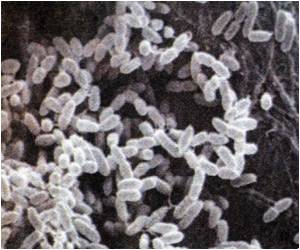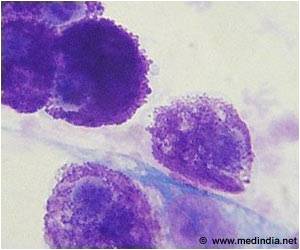At NYU Langone Medical Center, researchers have discovered a new mechanism by which the deadly Staphylococcus aureus bacteria attack and kill off immune cells.

"What we've found is that Staph unleashes a multi-purpose toxin capable of killing different types of immune cells by selectively binding to surface receptors," says Victor J. Torres, PhD, assistant professor of microbiology, and senior author of the study. "Staph has evolved the clever ability to target the immune system at different stages."
Scientists have long known that Staph releases an arsenal of toxins to puncture immune cells and clear the way for infection. But only recently have they begun to understand exactly how these toxins work. Earlier this year, Dr. Torres and his team published a paper in Nature explaining how one of those toxins, a protein called LukED, fatally lyses T-cells, macrophages and dendritic cells, all types of white blood cells that help fight off infection. The LukED toxin, they showed, binds to a surface receptor called CCR5 (the same one exploited by HIV). "It attaches to the surface receptor and then triggers pore formation," says Dr. Torres. But their discovery failed to explain how the bacterial toxin kills other types of white blood cells, such as neutrophils, that lack the CCR5 receptor.
Their most recent work solves this puzzle, showing for the first time how receptors on neutrophils (a common type of white blood cell) also enable binding of the LukED toxin. The researchers found that LukED latches onto surface receptors called CXCR1 and CXCR2, creating the same deadly pores that it does when it latches onto CCR5 receptors. "The mechanism is the same," says Dr. Torres. "The strategy makes Staph deadlier in mice."
Neutrophils are the first responders. Upon infection, they race through the bloodstream to kill off the invading pathogen. "They're like the marines of the immune system," Dr. Torres says. T-cells, macrophages and dendritic cells rush in later, mounting a secondary attack to help the body clear the pathogen and remember it in the future. "Killing off the first responders completely disarms the immune system," Dr. Torres says.
LukED is just one piece of the puzzle, and more research is needed to understand other Staph toxins and how they work together to make the microbe deadlier. However, these recent insights hold promise for new medications that target LukED. Better treatments against Staph are desperately needed. In 2005, the Centers for Disease Control and Prevention estimated that more than half of the 478,000 people hospitalized for staph infections were resistant to methicillin, one of the most potent antibiotics available.
Advertisement
Source-Eurekalert











